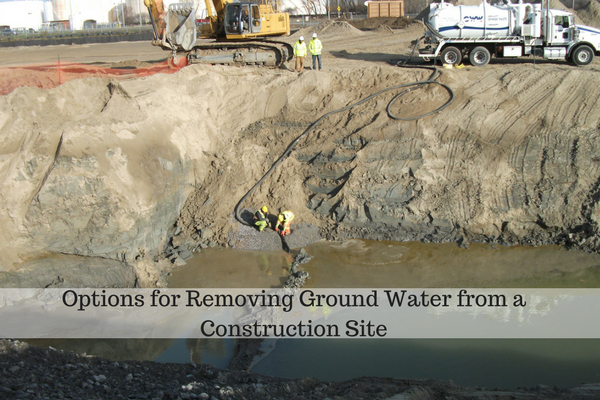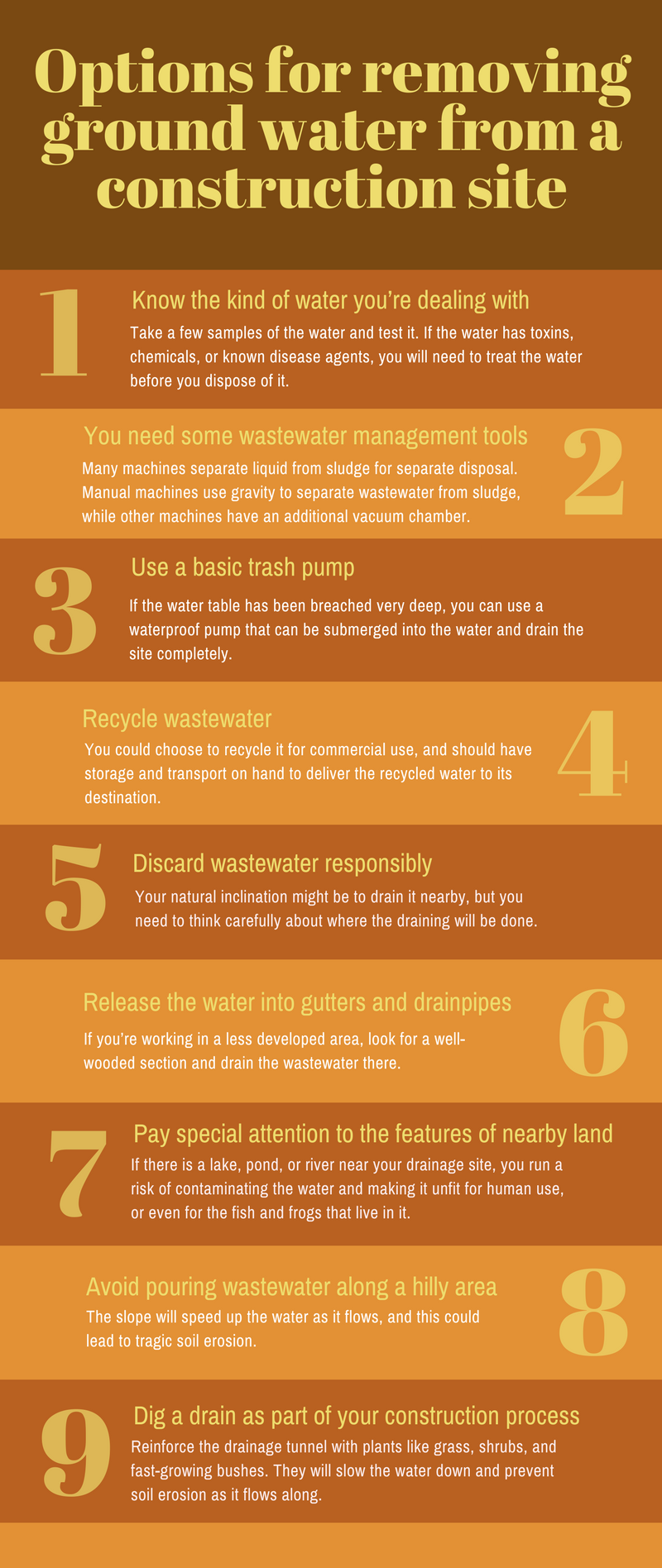Digging a foundation is one of the most important parts of any construction project. You need to ensure it is deep enough to support your planned building, and ideally, it goes all the way to the bedrock for added stability.
Digging that deep often releases underground water onto your site. In addition, now that the top soil is gone, your site has no buffer to absorb excess water from rain and construction. There are several options available to get rid of this excess water in a safe, efficient, environmentally friendly way.
Before you choose a dewatering system, you need to know the kind of water you’re dealing with. Take a few samples of the water and test it. If the water has toxins, chemicals, or known disease agents, you will need to treat the water before you dispose of it. This way, you avoid causing further damage to your construction team, nearby residents, and the environment in general.
If the water is in any way contaminated, you will need some wastewater management tools. Many machines separate liquid from sludge for separate disposal. Manual machines use gravity to separate wastewater from sludge, while other machines have an additional vacuum chamber. The chamber generates more power, which means more liquid is separated and drier waste is produced as a result.
Wastewater is generally removed from construction sites using some kind of pumping mechanism. You can use a basic trash pump that has enough suction power to pull out all the water. If the water table has been breached very deep, you can use a waterproof pump that can be submerged into the water and drain the site completely.
Another key decision is what you will do with the wastewater once you have pumped it away from the site. You could choose to recycle it for commercial use, and should have storage and transport on hand to deliver the recycled water to its destination.
If the water isn’t intended to have any specific use, it can be discarded responsibly using several different methods. Your natural inclination might be to drain it nearby, but you need to think carefully about where the draining will be done.
If your construction site is in an urban area, you could release the water into gutters and drainpipes, then it will be directed to municipal drainage systems. If you’re working in a less developed area, look for a well-wooded section and drain the wastewater there. Wooded areas are efficient because the soil and plants absorb the water quickly. However, make sure the water has no toxins that would harm the forestry and the animals that live there.
As you choose your drainage site, pay special attention to the features of nearby land. If there is a lake, pond, or river near your drainage site, you run a risk of contaminating the water and making it unfit for human use, or even for the fish and frogs that live in it.
You should also avoid pouring wastewater along a hilly area. The slope will speed up the water as it flows, and this could lead to tragic soil erosion. Erosion destroys soil nutrients and causes an even bigger mess by depositing this now wasted soil onto human surfaces like homes, playgrounds, and car parks.
If you don’t have a natural pathway for your wastewater to flow, you can dig a drain as part of your construction process. Reinforce the drainage tunnel with plants like grass, shrubs, and fast-growing bushes. They will slow the water down and prevent soil erosion as it flows along.





